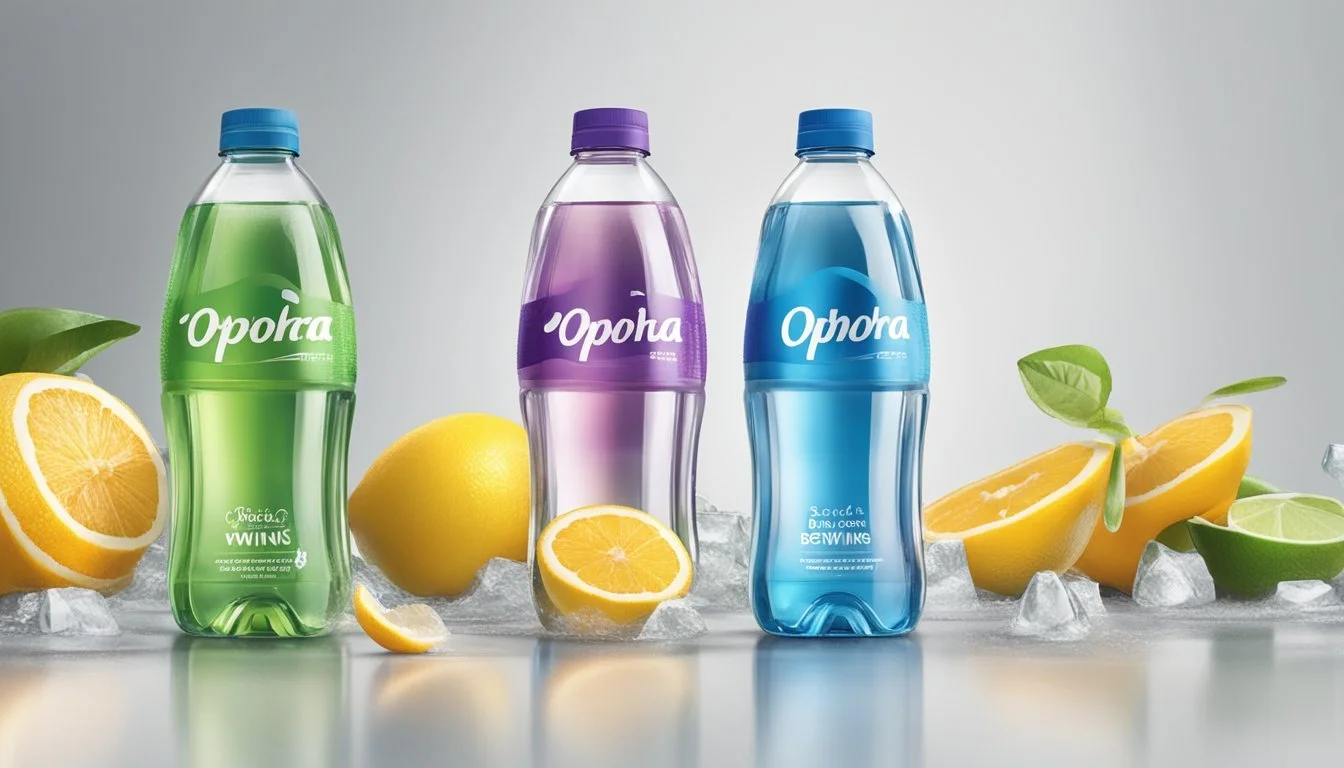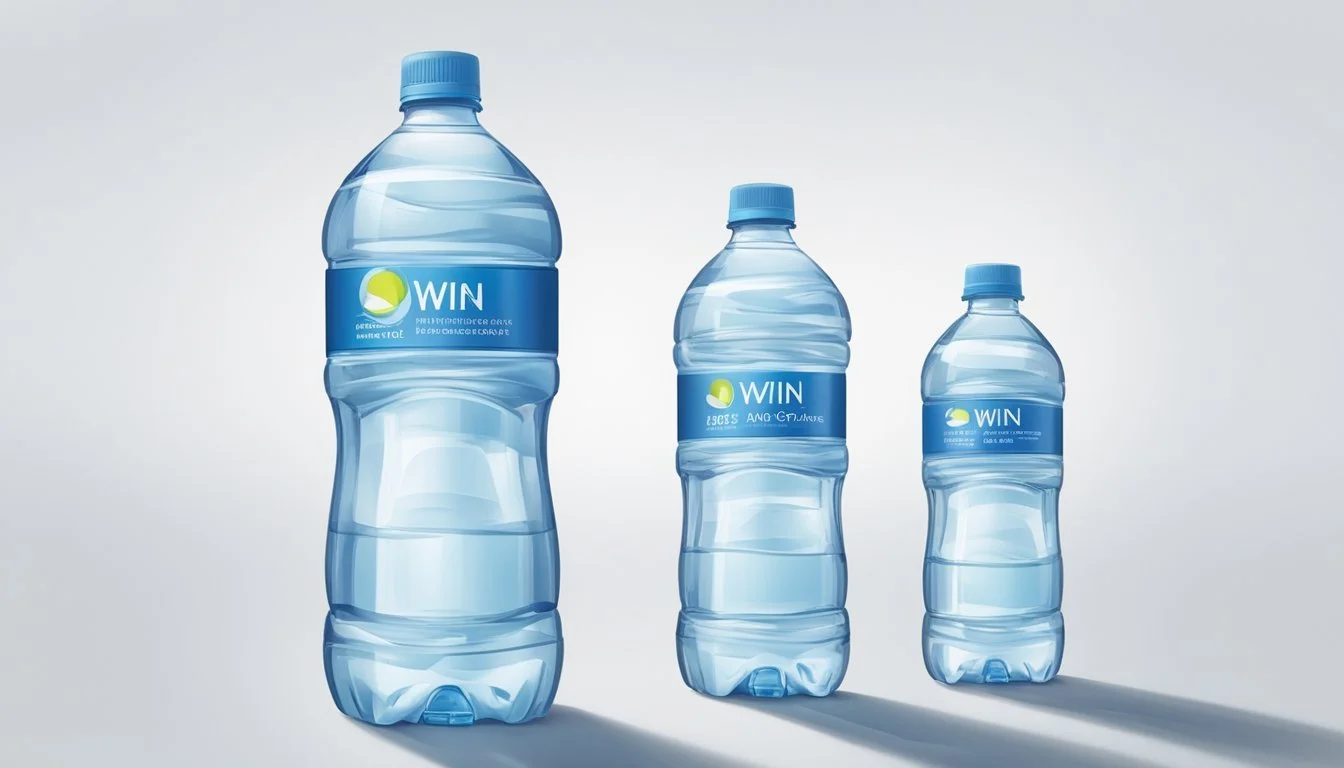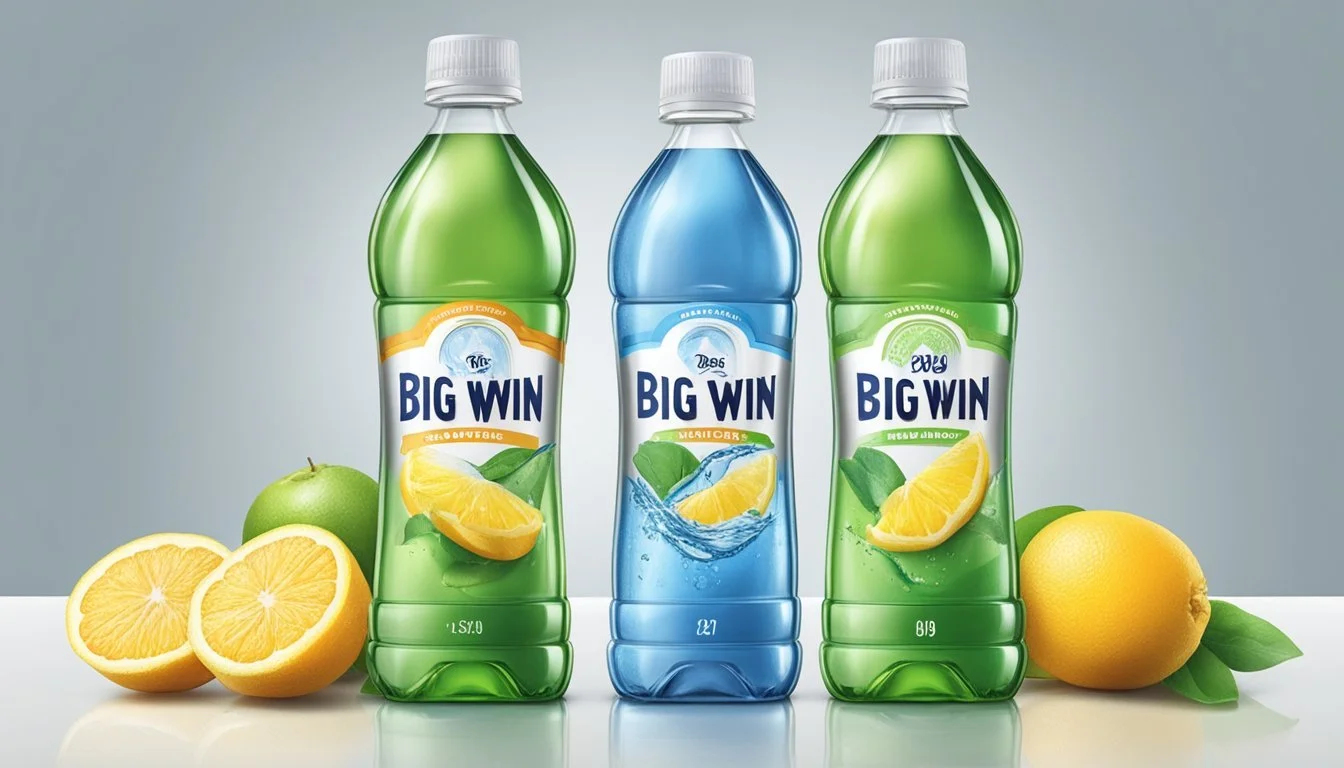Ophora vs. Big Win
Analyzing the Superior Bottled Water Choice
When it comes to choosing between Ophora Water and Big Win, the decision can be challenging given the many factors at play. Both brands promise various benefits, but a closer look at each can help shed light on which might be the better option for you. For those prioritizing purity and advanced filtration, Ophora Water stands out with its rigorous micro-filtration, reverse osmosis, and ultraviolet exposure processes, ensuring 99.9% purity.
On the other hand, Big Win provides a reliable and budget-friendly option for many consumers. While it may not boast the same advanced filtration methods as Ophora, it still manages to meet basic hydration needs without breaking the bank. The choice between these two ultimately boils down to what you value more - cutting-edge filtration and purity or cost-effectiveness and reliability.
Readers interested in health and wellness will find Ophora Water particularly appealing due to its emphasis on purity and added electrolytes. In contrast, those looking for an economical solution without compromising on quality will appreciate what Big Win has to offer. This article delves into the specifics of each brand to help you make an informed choice based on your needs and preferences.
Understanding Bottled Water
Bottled water comes in various forms, each with its own sourcing and treatment process. It's essential to recognize the categories and regulations governing bottled water to make informed choices.
Categories of Bottled Water
Spring Water: Collected from natural springs, spring water must be bottled at the source. It retains the minerals naturally found in the water.
Purified Water: Treated through processes like distillation, deionization, or reverse osmosis, purified water often originates from either surface or ground sources but is stripped of impurities and contaminants to meet certain standards.
Mineral Water: Contains no less than 250 parts per million total dissolved solids, derived from a geologically protected underground source. Minerals and trace elements remain as they are.
Tap Water: Commonly available through the municipal water supply, tap water can also be bottled. It is treated extensively to meet safety standards set by the Environmental Protection Agency (EPA).
Regulations and Standards
FDA: The Food and Drug Administration (FDA) regulates bottled water in the United States. It ensures that bottle water meets health-based standards for contaminants including bacteria and chemicals.
EPA: The EPA regulates tap water, ensuring it meets stringent safety and quality standards. Bottled water may be subject to different regulations, but it must adhere to FDA standards.
Labeling Requirements: All bottled water must be accurately labeled, detailing its source and any treatment processes it has undergone. Misleading labels can result in regulatory action.
Quality Control: Bottled water companies must conduct regular testing for contaminants. This includes checking for bacteria, synthetic organic compounds, and inorganic contaminants to ensure safety.
Regulations and standards are crucial to ensuring the safety and quality of both bottled and tap water, providing consumers with reliable and safe options.
Health and Safety Considerations
Consumers prioritize health and safety when choosing between Ophora and Big Win bottled water. Critical factors include pH levels, mineral content, potential contaminants, and safety of the plastic used.
PH Levels and Mineral Content
Ophora bottled water typically boasts a slightly alkaline pH ranging from 7.5 to 8.5, which some studies suggest may help neutralize acid in the bloodstream. This makes it appealing to those concerned about maintaining a balanced internal pH.
Big Win's pH level is usually around 7, making it neutral. While this might be less beneficial for those wanting alkaline water, it is still within the safe range for drinking water.
Mineral content in Ophora is emphasized, offering electrolytes and trace minerals such as calcium and magnesium. These minerals can be beneficial for hydration, muscle function, and overall well-being.
Big Win has a lower mineral content, focusing more on purified water benefits. It ensures cleanliness but lacks the same richness in beneficial minerals.
Potential Contaminants
Ophora ensures rigorous filtration processes that aim to eliminate contaminants. New methods have claimed to reduce nanoplastics significantly, which is crucial given concerns about these tiny particles' effects on health.
Big Win also follows stringent purification processes, but studies have shown that a liter of bottled water can contain up to 240,000 nanoplastic particles, similar to industry averages. This could pose potential long-term health risks.
Both brands test for common contaminants such as lead, mercury, and other heavy metals, with results showing levels well below EP (Environmental Protection) safety standards. Yet, the risk of microplastics remains a pertinent issue.
BPA and Plastic Safety
Ophora uses BPA-free plastic for their bottles, aligning with safety guidelines to prevent potential hormonal disruptions linked to Bisphenol A (BPA). This is a significant factor for health-conscious consumers.
Big Win also offers BPA-free options, though some of their product lines may use standard PET plastics, which are safe under normal conditions but may leach chemicals if exposed to high temperatures.
Both brands emphasize the importance of recycling and proper storage to minimize environmental impact and ensure consumer safety. However, considering recent scrutiny over plastic safety, these factors are crucial.
Brand Comparison: Ophora Water
Ophora Water is renowned for its unique hyper-oxygenation process and environmentally friendly glass bottle packaging. These features set it apart from many other bottled water brands in both health benefits and sustainability.
Hyper-Oxygenation Process
Ophora Water employs a hyper-oxygenation process that infuses the water with unparalleled oxygen content. This method aims to enhance superior intra-cellular hydration, which is believed to support better physical performance and recovery. The water is also nano-pure, meaning it goes through advanced filtration techniques to remove impurities at a microscopic level. This results in a product that not only tastes purer but is also promoted as a more effective means of staying hydrated.
The hyper-oxygenation claims can come with skepticism, but Ophora’s technology focuses on the belief that higher oxygen levels can benefit the body. Athletes and those with active lifestyles might find this particularly appealing.
Glass Bottles and Packaging
Ophora Water distinguishes itself with the use of glass bottles. This choice is not just about aesthetics; it reflects the brand’s commitment to environmental sustainability. Glass is highly recyclable and does not pose the same risks of chemical leaching as plastic. This is a significant advantage for consumers who are concerned about both health and environmental impact.
The glass bottles also help maintain the integrity and taste of the water, ensuring that the hyper-oxygenated, nano-pure quality remains intact. While plastic bottles can impart unwanted flavors, glass offers a cleaner taste experience, appealing to discerning water drinkers. Additionally, the packaging provides a premium feel, aligning with Ophora’s high-end market positioning.
Brand Comparison: Big Win
Big Win is widely recognized for its affordability and ease of availability in grocery stores. Their water source and specific filtration techniques also play a significant role in the brand's credibility.
Affordability and Availability
Big Win is a highly accessible brand found in numerous grocery stores across the country. The pricing strategy is budget-friendly, targeting consumers looking for a cheaper alternative without compromising on essential quality. Many customers appreciate that they can purchase a multi-pack of Big Win water bottles at competitive prices.
Moreover, the brand often runs promotions and discounts, making it a preferred choice for bulk purchases. The availability extends to both physical stores and online platforms, ensuring that consumers have easy access regardless of their shopping preferences.
Source and Filtration Techniques
Big Win sources its water from municipal supplies, which undergoes a comprehensive filtration process. This multi-step system includes reverse osmosis, which effectively removes impurities such as heavy metals and microorganisms, ensuring that the end product is safe and clean for drinking.
Filtration Process Steps:
Pre-filtration: Removes larger particles and sediments.
Reverse Osmosis: Purifies water by eliminating dissolved solids.
Carbon Filtration: Enhances taste by removing chlorine and odors.
Ozonation: Adds a final layer of disinfection.
These detailed techniques contribute to the consistent quality of Big Win water, assuring consumers of its safety and cleanliness. The meticulous attention to filtration reflects the brand's commitment to delivering reliable bottled water to its customers.
Taste Profile and Water Sommelier Insights
The taste of bottled water varies greatly due to various factors including mineral content and the source of the water. Renowned water sommeliers provide valuable insights into these differences.
Factors Affecting Water Taste
Several elements influence how bottled water tastes. Mineral composition is a crucial factor. Waters high in minerals may taste slightly sweet, metallic, or even salty. Spring waters generally have a balanced taste due to their moderate mineral content, while mineral waters may have a more pronounced flavor.
Source of water also matters. Aquifers, springs, and glaciers contribute distinct characteristics. For instance, water from volcanic regions, like Waiakea, can have a soft texture and subtle sweetness due to natural filtration through volcanic rock.
Bottle material (plastic vs. glass) impacts taste too. Plastic bottles might impart a faint plastic taste, whereas glass bottles preserve the purity better. The temperature at which water is consumed also affects its flavor perception, with colder water generally tasting crisper.
Expert Opinions on Water Flavor
Water sommeliers, like Martin Riese, highlight the differences in water taste. Mountain Valley Spring Water, praised for its clean, light, and slightly sweet taste due to its balanced mineral content, is often cited as one of the best tasting waters.
Ophora water is known for its ultra-pure taste and oxygen enrichment, which sommeliers often describe as exceptionally refreshing. It’s ideal for those seeking a pure, clean finish with no aftertaste.
Conversely, Big Win offers a basic, reliable taste that is neutral and palatable. Though it may lack the complexity of higher-end waters, it remains a solid choice for everyday hydration, mainly due to its neutral profile without any overpowering mineral notes.
Environmental Impact and Sustainability
Examining the environmental impact and sustainability of Ophora and Big Win bottled waters involves evaluating their packaging practices and the conservation of their water sources. Both aspects provide insight into which brand is more conscientious toward ecological concerns.
Eco-Friendliness of Packaging
Packaging materials play a significant role in the environmental footprint of bottled water. Ophora focuses on using re-structured, recycled PET plastics, which reduces waste and promotes a circular economy. They prioritize minimizing plastic use and increasing recyclability.
In contrast, Big Win uses standard PET bottles but claims an emphasis on recycling initiatives. Recycling rates and the integrity of materials become critical factors here. PET can theoretically be recycled multiple times, yet actual recycling rates fall short, leaving a substantial ecological burden. Therefore, the difference in their approach to packaging innovation and practical recycling rates can affect their environmental impact substantially.
Water Source Conservation
Water source conservation assesses how each brand manages and sustains its water sources. Ophora utilizes water from pristine aquifers, ensuring minimal disruption to natural ecosystems. They invest in technologies for sustainable extraction and regularly assess the ecological impacts.
Big Win, on the other hand, sources water from various springs and uses volume-based extraction, potentially straining local water supplies. This approach can cause long-term ecological damage if not managed responsibly. Conservation efforts, replenishment initiatives, and impacts on local biodiversity are key considerations for evaluating each brand's sustainability.
By considering packaging and source conservation practices, the environmental implications of choosing Ophora or Big Win go beyond simple product preferences to reflect a larger environmental consciousness.
The Verdict
When examining the offerings of Ophora and Big Win, differences in quality, price, and consumer satisfaction come to the fore. Here's a breakdown.
Summarized Comparison
Ophora is acclaimed for its rigorous purification techniques, including advanced oxygenation and micron-filtration processes. This results in exceptionally clean water with potential health benefits. Consumers who prioritize purity and wellness often lean towards Ophora despite its higher cost.
Big Win, on the other hand, offers a basic purified water experience through reverse osmosis. It is widely available and affordable, making it an attractive choice for budget-conscious buyers. It lacks the specialized purification processes of Ophora but remains a reliable option for everyday hydration needs.
Price is a significant differentiator. Ophora’s advanced technology commands a premium, while Big Win’s simplicity keeps it affordable.
Brand Purification Method Price Range Consumer Feedback Ophora Micron-filtration, Oxygenation High Excellent purity, health-conscious Big Win Reverse osmosis Low Solid choice for value, basic hydration
Recommendations for Consumers
For those focused on health benefits and ultra-purified water, Ophora is the recommended choice. Its advanced filtration and oxygenation processes provide a level of purity and potential wellness advantages that standard bottled waters typically do not offer. Premium users who do not mind spending more for quality will appreciate what Ophora brings to their hydration routine.
Budget-minded consumers or those who seek a no-fuss hydration option may find Big Win more suitable. It delivers solid purified water without the premium price tag, making it ideal for daily consumption, family use, and those looking to minimize expenses without compromising on basic quality.
More About Ophora
Mountain Valley Spring Water vs Ophora: Which Bottled Water is Better?
Ophora vs Kirkland Signature: Which Bottled Water is Better?
Richard's Rainwater vs Ophora: Which Bottled Water is Better?
Whole Foods Italian Still Mineral water vs Ophora: Which Bottled Water is Better?
More About Big Win
Big Win vs Kirkland Signature: Which Bottled Water is Better?
Icelandic Glacial vs Big Win: Which Bottled Water is Better?
Mountain Valley Spring Water vs Big Win: Which Bottled Water is Better?
Richard's Rainwater vs Big Win: Which Bottled Water is Better?
Whole Foods Italian Still Mineral water vs Big Win: Which Bottled Water is Better?







